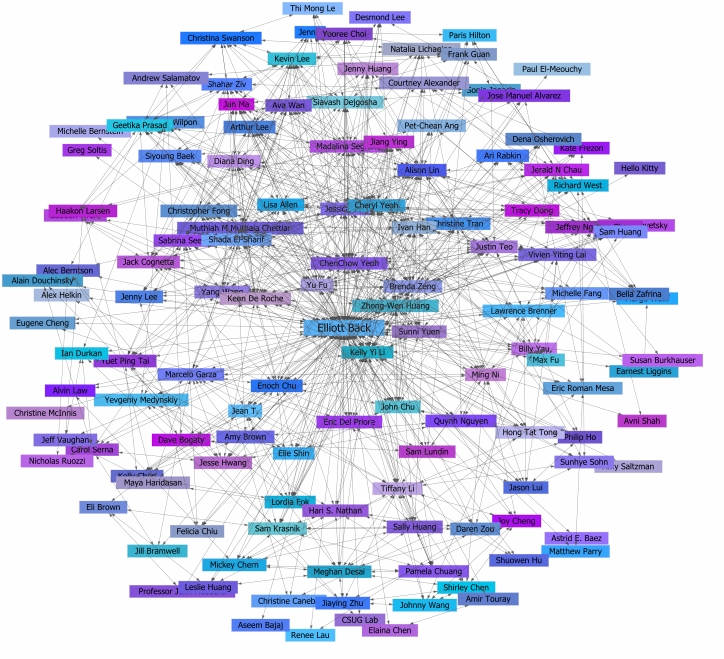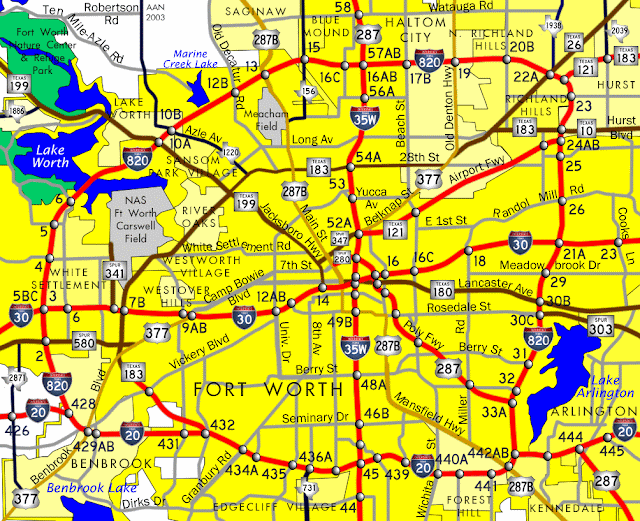Monday, February 25, 2013
Statistical Map
Statistical Map- These can represent distances relative to another property besides physical distance, and can thus be used to demonstrate relationships among entities. This is a statistical map of connectivity between people on the social media site Facebook. Individuals that appear to be close to others aren't necessarily close in a physical sense, or in any other way besides online (http://markvandykenewsroom.blogspot.com/2011/04/social-media-is-extremely-important.html).
Cartogram
Cartogram- Usually incorporates a thematic mapping variable, while the geometry or area of the map is distorted in order to spatially convey this or another variable as well. In this cartogram of the 2004 election for President, each state is assigned a color based on who the majority of the state's registered voters voted for, either Gore or Bush. In addition, each state is also spatially distorted in order to convey relative population size (http://panse.org/CartoDraw/).
Flow Map
Flow Map- These maps show the path of entities across a surface and the intensity of travel along
these paths. Here, networks of truck flows and amounts from Texas across the US are shown. This can also be classified as a chloropleth map, since state to state transportation flows are divided into intervals and states are color coded accordingly (http://www.lib.utexas.edu/maps/texas.html).
Isoline Map
Isoline Map- A hypsometric map that uses continuous lines (contour lines) to connect points of the same value for a variable, such as elevation, air pressure, wind direction, etc. This map show historical travel times from different US continental locations to New York city (http://mapmaker.rutgers.edu/355/Journey_to_Work.jpg).
Friday, February 15, 2013
Proportional Circle Map
Proportional Circle Map- Circle symbols on the map vary in size according to the numerical value they represent. The number of internet users throughout Europe in 2004 are shown here (the smallest unit represented is 200,000 people, the largest is greater than 8,500,000) (http://www.geog.ucsb.edu/~jeff/gis/proportional_symbols.html).
Choropleth Map
Choropleth Map- A type of thematic map that portrays areal data, where areas are shaded or patterned in proportion to the measurement of the statistical variable being represented. This is a classed choropleth map, where the varying percentages of people with a full education in Nova Scotia, Canada (2001) are represented by colors corresponding to natural break intervals (selected by the discretion of the map maker and information provided by a corresponding histogram). Numerical values for an areal unit may be areally averaged, expressed as percentages here. (http://www.cs.umd.edu/class/spring2005/cmsc838s/viz4all/viz4all_a.html).
Dot Distribution Map
Dot Distribution Map- Uses a dot or other symbol (doesn't vary in size) to represent the presence, density, and spatial pattern of one or more features or phenomenons. In this case the population of the United States according to the 2000 census is shown, one dot representing 7500 people (https://www.census.gov/geo/www/mapGallery/2kpopden.html).
Propaganda Map
Propaganda Map- Aims to persuasively mobilize viewers for a purpose, often political, through unique displays of information. Explicitly, this map shows civilian casualties due to acts of terrorism in Afghanistan from 2004 to 2009. The use of the strong black and red, dramatic title, bold graphics evoke, menacing symbols, sharp edges, and the avoidance of gradient effects create a sense of urgency and danger characteristic of World War II battle maps that were common in publications of the time. This is also a proportional circle map (red circles of varying sizes represent number of casualties), as well as a topographic map (hand-drawn style dotted contour lines represent Afghanistan's diverse terrain, achieved through digital elevation data in ArcGIS) (http://www.esri.com/mapmuseum/mapbook_gallery/volume26/defense-and-military/defense-and-military-2.html).
Public Land Survey System (PLSS) Map
Public Land Survey System (PLSS) Map- Systematic land partitioning system that involves a grid system of townships extending north-south and ranges extending east-west within the parameters of meridians and baselines, extending from an initial point. This is a U.S. cadastral system that applies to most states, in this case Kitsap County, Washington (http://www.kitsapgov.com/gis/maplibrary/).
Cadastral Map
Cadastral Map- An unsystematic land partitioning system through metes and bounds that facilitates land ownership. Commonly includes details of the ownership, tenure, precise location (some include GPS coordinates), dimensions (and area), the cultivations if rural, and value of individual parcels of land. Here, land partitioning in an area of Tasmania is shown (https://www.tasmap.tas.gov.au/do/product/5438).
Thursday, February 14, 2013
Planimetric Map
Planimetric Map- Surface map with no relief features, shows only the horizontal position of features on the Earth's surface without topographic features. This two-dimensional map shows the network of streets and highways, as well as water bodies, in Fort Worth, Texas (http://www.lib.utexas.edu/maps/texas_cities.html).
Hypsometric Map
Hypsometric Map- A surface map with relief shown, a factor of third dimension is expressed. In this case, through color communicating concerning the varying depths of the Pacific Ocean (http://www.pmel.noaa.gov/pubs/outstand/john3037/summary.shtml).
Topographic Map
Topographic Map- Shows third dimension of relief, contour lines connect equal areas of elevation at an undisclosed location here. The third dimension is also represented by shading and color. Topographic maps are also considered hypsometric maps since a factor of third dimension is communicated (http://geology.isu.edu/geostac/Field_Exercise/wildfire/topography.htm).
Mental Map
Mental Map- An individual's personal perception of what is being mapped, associated with the new discipline of cognitive mapping. This is a student in Thailand's version of the world, southeastern Asian countries are drawn with more detail than the rest of the world, especially the western continents and countries (http://go.owu.edu/~jbkrygie/krygier_html/geog_222/geog_222_lo/geog_222_lo13.html).
Subscribe to:
Comments (Atom)













